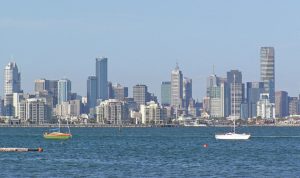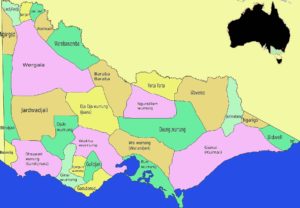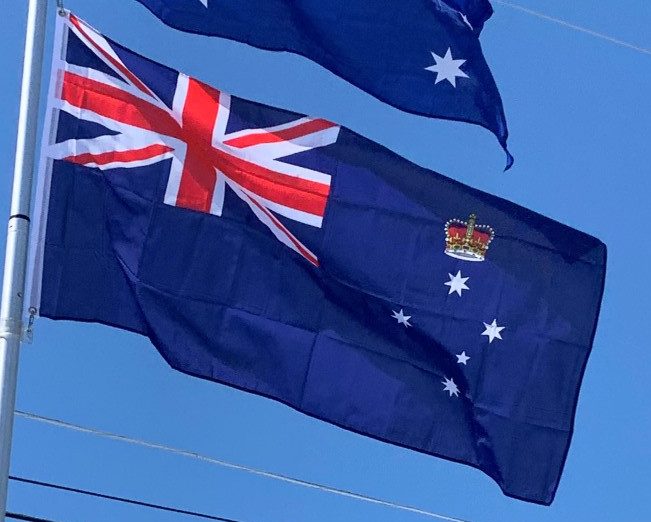
History:
Aboriginal History:
The state of Victoria was originally home to many indigenous nations that had occupied the land for tens of thousands of years. According to Gary Presland Aborigines have lived in Victoria for about 40,000 years, living a semi-nomadic existence of fishing, hunting and gathering, and farming eels.
At the Keilor Archaeological Site a human hearth excavated in 1971 was radiocarbon-dated to about 31,000 years BP, making Keilor one of the earliest sites of human habitation in Australia. A cranium found at the site has been dated at between 12,000 and 14,700 years BP.
Archaeological sites in Tasmania and on the Bass Strait Islands have been dated to between 20,000 – 35,000 years ago, when sea levels were 130 metres below present level allowing Aborigines to move across the region of southern Victoria and on to the land bridge of the Bassian plain to Tasmania by at least 35,000 years ago.
During the Ice Age about 20,000 years BCE, the area now the bay of Port Phillip would have been dry land, and the Yarra and Werribee river would have joined to flow through the heads then south and south west through the Bassian plain before meeting the ocean to the west. Tasmania and the Bass Strait islands became separated from mainland Australia around 12,000 BP, when the sea level was approximately 50m below present levels. Port Phillip was flooded by post-glacial rising sea levels between 8000 and 6000 years ago.

Oral history and creation stories from the Wada wurrung, Woiwurrung and Bun wurrung languages describe the flooding of the bay. Hobsons Bay was once a kangaroo hunting ground. Creation stories describe how Bunjil was responsible for the formation of the bay, or the bay was flooded when the Yarra river was created.
Early European Exploration:
Coming from New Zealand in 1770, Lieutenant James Cook in HM Bark Endeavour sighted land at Point Hicks, about 70 km west of Gabo Island, before turning east and north to follow the coast of Australia.
Ships sailing from the Great Britain to Sydney crossed the Indian Ocean and Southern Ocean, sailing around Van Diemen’s Land before turning north to their destination. Several captains viewed the expanse of water between Van Diemen’s Land and the east coast of New South Wales and wondered whether it was a large bay or a strait. Survivors of Sydney Cove, wrecked in the Furneaux Group of islands, also thought it might be a strait.
To clear up the question, Governor John Hunter sent George Bass to explore thoroughly the coast in a whaleboat. After reaching Wilsons Promontory and Western Port in January 1798 bad weather and lack of provisions forced him to return to Sydney. Bass returned with Matthew Flinders in December 1798 in Norfolk and sailed through the strait, proving its existence.
Multiple additional surveying and exploration journeys would be undertaken by a variety of sailors, including one French vessel.
1803 British Settlement:
With Britain involved in the French revolutionary wars, Governor King was concerned that Bass Strait could harbor enemy raiders, and that in peace time it could provide an important trade route and trading base. The appearance of Baudin’s ships served to reinforce the concern that France was interested in the area. King was also looking for an alternative settlement for the increasing number of convicts in Sydney and to reduce the pressure on food resources. Port Phillip, with a favorable climate and rich fishing and sealing resources, seemed an ideal location for another settlement.
